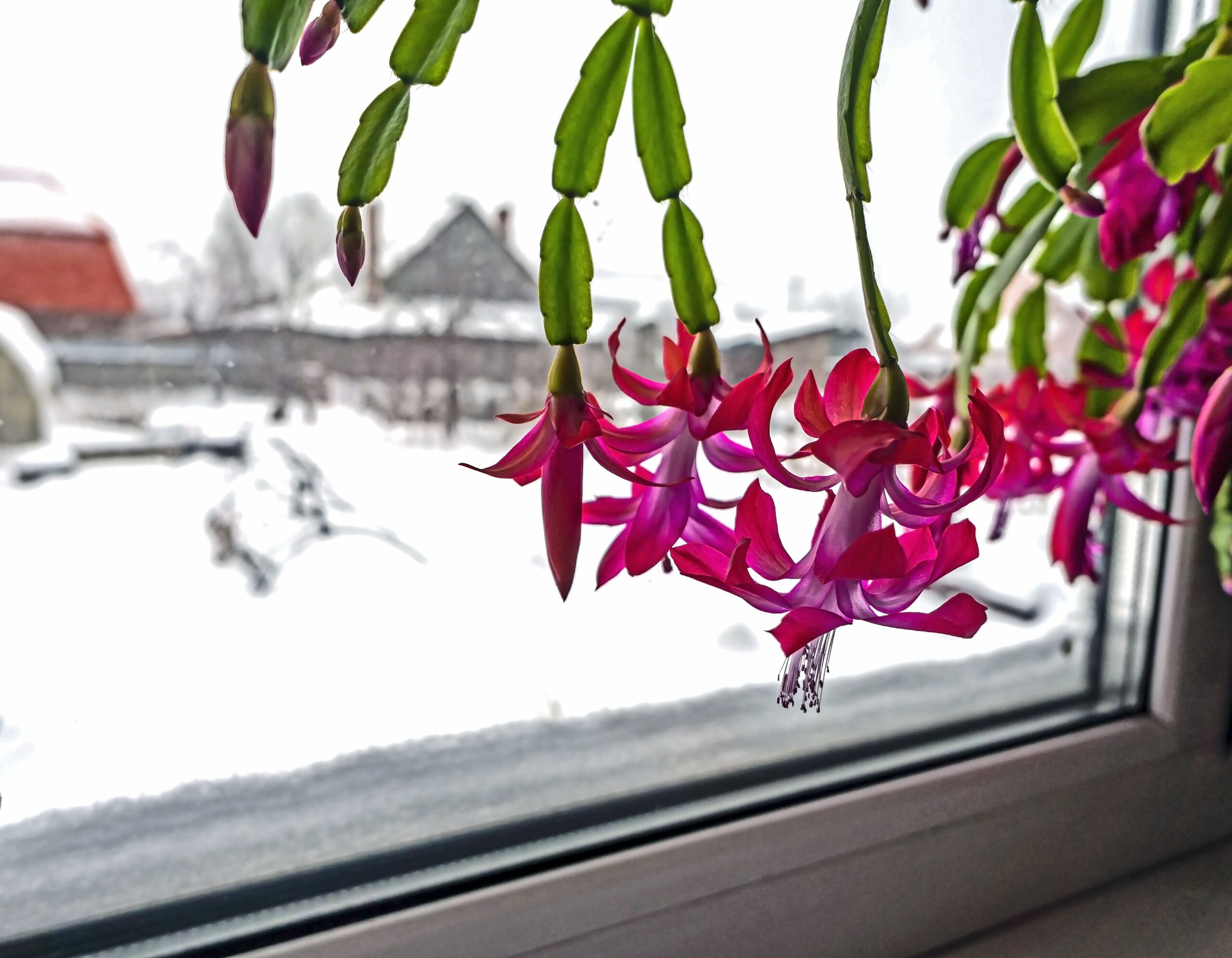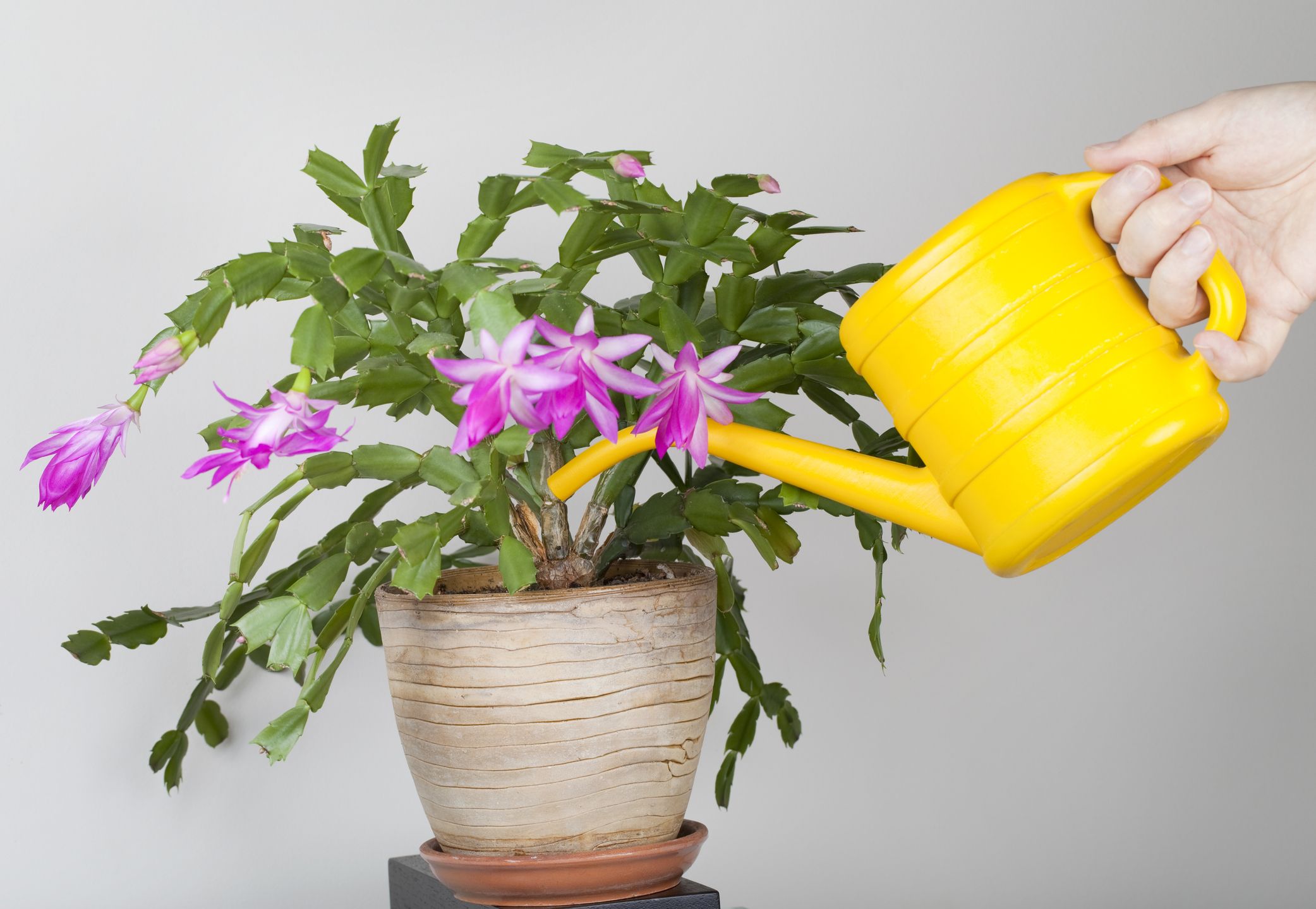What’s wrong with my Christmas cactus?
Desert plants that bloom on special occasions are sensitive to temperature and humidity levels. While they can tolerate cold temperatures, they need optimal conditions for abundant flowering during certain times of the year.
Stunted Growth or Deformity
If you notice that your holiday cactus is not growing properly or is showing signs of deformity, inspect it closely for signs of a mealybug infestation. Mealybugs are tiny white insects, about 1/8 to 1/4 inches long, that move slowly and typically appear near the base of the cactus in dark, warm, damp areas. These pests feed on plant sap and leave behind a sticky substance called honeydew, which can lead to mold growth on the plant.
Yellowed, Spotted, or Withering Leaves or Stems

If your plant is showing signs of yellow leaves, leaf spots, or wilting stems, inspect them closely for thrips. Thrips are small, delicate insects that resemble tiny dark specks or miniature lobster-like creatures. The damage to the leaves and stems is not directly caused by thrips but by a virus they commonly transmit, known as impatiens necrotic spot virus. To address the thrip infestation, consider using insecticidal soap or neem oil.
Wilting can also be caused by insufficient light, inadequate watering, or if the plant is rootbound. Correct these conditions and monitor closely for improvements.
Leaves Becoming Red or Pink

If the leaves of your Christmas Cactus turn red or pink you may be asking yourself what’s wrong with my Christmas cactus? it may be due to receiving too much sunlight or not enough water. If your plant is in a window with direct sunlight, consider moving it to indirect light. Water your plant more frequently if the soil is dry up to 1 inch deep. The general rule is to water a Christmas cactus when the top layer of soil is dry.
Root Decay

Shrinking, earthy colored leaves, dark or rosy spots on leaves and stems and saturated soil all are markers the plant might have root decay. Assuming that you suspect this issue, eliminate it from its pot and shake off overabundance soil. Remove spongy, stained roots, replant in a new pot with dry preparing medium and permit the roots to recuperate a few days prior to watering.
Normal Bugs and Plant Illnesses
Some of the most common pests that infect succulent plants during the growing season are fungus gnats, flower thrips, aphids, spider mites, and mealybugs. Avoid watering your plant excessively as damp soil tends to attract these insects. Insecticidal soap and horticultural oil are effective in managing an infestation. The tiny insects can also be removed by gently wiping them with a cotton ball soaked in alcohol.
Overwatering plants can lead to parasitic infections, which are common. To prevent these infections, avoid excessive watering. Two common parasites that can cause stem decay in Christmas cacti are Fusarium and Phytophthora. Fusarium stem decay is characterized by the formation of brown spots on the stem near the soil. If caught early, a Christmas cactus can recover from Fusarium, but it is often difficult to save. If the plant has overly moist soil, allow it to dry out and apply a fungicide following the package instructions.



Good web site! I truly love how it is simple on my eyes and the data are well written. I am wondering how I might be notified when a new post has been made. I have subscribed to your RSS which must do the trick! Have a great day!